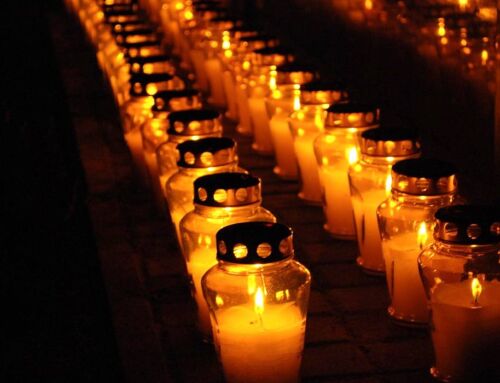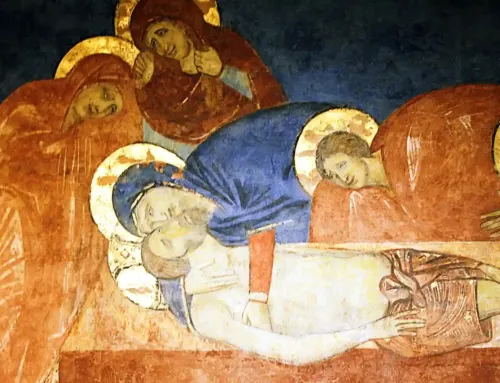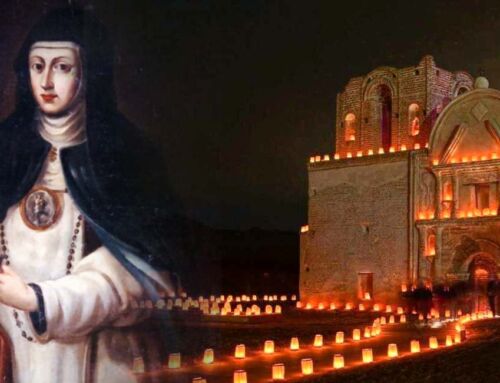In theory, at least, most people believe that art and music have power to touch hearts. But if that is still a vague concept for you, perhaps an experience of the Lord’s Prayer chanted in Aramaic will convince you of the transformative power of sublime art.
In the comment section of the YouTube video of the chant (see below), you can find this amazing bit of feedback. The comment is incredibly uplifting:
I’m an atheist yet I’ve watched this countless times and have wept each time. This has to be one of the most beautiful things I’ve had the privilege of hearing, ever. I’m so touched.
The Our Father in Aramaic!
Aramaic is the very language Jesus and the apostles spoke. We have remnants of Aramaic words and expressions in the Gospels. When Jesus raised the little girl from the dead, He pronounced the words, Talitha kumi (“Little girl, arise”, Mark 5:41), and just before He died on the Cross, He recited the Aramaic version of Psalm 22, Eloi, Eloi, lama sabachthani? (“My God, my God, why have you forsaken me?”, Mark 15:34), among others.
All of the disciples and the crowds that followed Him throughout Galilee heard Him deliver this prayer in their own language. We are heirs to this wondrous and beautiful prayer. The Our Father as we know it is a translation (from Greek to English) of a translation (from Aramaic to Greek). And although we might not understand the foreign words chanted in the video, we can sense their power.
A Linguistic Prodigy
Aramaic is one of the oldest continuously spoken and written languages known to man. It is the language of Syria but has spread throughout the Middle East and Asia over the centuries through migration and morphed into many other related languages and dialects. As a spoken language, it probably dates from at least the time of Abraham (1500 BC), and we have pagan and religious writings in various forms of Aramaic from as early as 1200 BC.
The Old Testament is written primarily in Hebrew and Greek, but some portions of books were written in Aramaic (especially Ezra and Daniel), which the Catholic Church considered canonical scripture. There are also many translations of the Hebrew Bible into Aramaic (known as targums) as well as non-biblical religious texts, such as numerous documents of the Dead Sea Scrolls. The famous early church father, St. Ephrem the Syrian, delivered his magnificent sermons and poetry in a dialect of Aramaic.
In other words, Aramaic is one of the most extensive and prolific languages in all of human history.
A Living Language
Yet, most people don’t know that Aramaic is still a spoken language. Living proof of this is the priest and choir who appear in the video. Their home is a little village named Kanda in the central European country of Georgia, where a small community of Aramaic-speaking Christians live. Pope Francis visited Georgia in 2016, and the Holy Father’s visit was the occasion of their chant.
The priest of the community, Archimandrite (roughly equals “Monsignor”) Seraphim Bit-Kharibi, had this to say in an interview about his community and about the Aramaic language:
My people, Assyrians are probably the only ethnic group in the world who still pay with their lives for their worship of Christ. In Eastern countries such as Iraq, Iran, Syria and other warzones, Assyrians get attacked in their churches and beheaded if they refuse to convert to Islam. They are being destroyed en masse.
As for Assyrians in Georgia, there are about 4000 of them. The Assyrian language is basically Neo-Aramaic [which] is about 2500 years old. The wonderful thing is that this language allows us insight into what people living centuries ago sounded like. Out of 4000 Assyrians living in Georgia, 2000 of them live in my village of Kanda and comprise 95% of its population. Almost 90% of these people speak Neo-Aramaic.
Archimandrite Seraphim also noted that he could understand all three languages spoken in Mel Gibson’s The Passion of the Christ – Aramaic, Hebrew, and Latin – without need of translation!
About the Chanting
The chant is both a performance and a prayer. It is a liturgical performance in the presence of the pope, but that can’t be detached from the deep sense of devotion that exudes from the singers as they chant the Lord’s Prayer.
Notice the adolescent girl who acts as the priest’s counterpart in the chanting. She leads the prayer, and her voice is clear and striking in its purity. She also brings the chant to its conclusion.
A choir stands around the priest, and the chorus of male and female voices form a background to the solos. Given the setting, it is sometimes difficult to discern who is singing and who is listening, but that is almost an irrelevant distinction. Everyone present is drawn into the chant (except the state security team who remain on high alert at all times!)
The overall effect of the chant is an exquisite blend of simplicity and passion which make for a profound sense of prayer.
Here we are once again: standing before a sacred window looking into another world – or rather, opening that portal from heaven so that our world may be transformed but its grace.
Let us hope that all atheists will yet be saved by such beauty.
Performance (duration, 5:07)
Another Version (duration, 2:48)

Soul Work
Have you ever prayed the Lord’s Prayer slowly?
Because the Our Father is a prayer most of us learned by rote as a child and recite daily or weekly at Mass, it is easy to rush through it without a lot of thought. Yet, there is great power in a slow and deliberate recitation of the prayer that Jesus taught us, meditating on each word and concept in the prayer.
Perhaps the chant in Aramaic will inspire you to take time today for a meditative recitation of the single prayer that Christ wants all His disciples to pray.
And while you pray this central prayer of our faith, don’t forget to beg conversion for all those souls who have rejected Christ and fallen from the faith that can save them.




There is always something to learn from Sacred Windows .
Thanks Don! I think I learn the most from writing them. Peace.